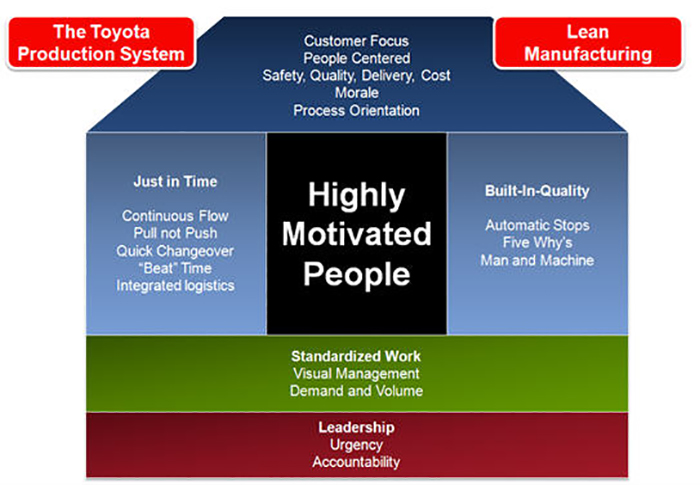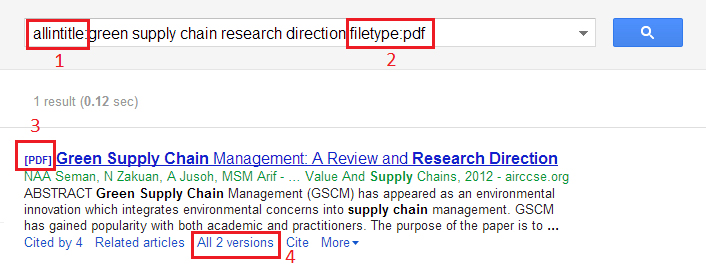An Executive Guide to Supply Chain Research
What is research? In layman’s terms, research is the way you solve problems in systematic manner and, you know very well, problems are part of the business environment.
Many people think supply chain research is boring and it is the ivory tower that they don’t need to climb.
This article will show you why research is relevant to you and how to study without damaging your brain!
Background
What is Supply Chain Research?
In layman’s terms, research is the way you solve problems in a systematic manner and, you know very well, problems are part of the business environment.
The reason people feel a research or scholar article is a turn-off because they don’t know which one they should read, which one they shouldn’t.
Not Everything is Equal
So let’s talk about types of researches a bit.

Simply put, the aim of “Basic Research” is to observe and understand what happens (phenomenon) while “Applied Research” tries to answer practical questions. “Action Research” is usually conducted by practitioners in workplace to solve particular issues they’re facing.
Example of Supply Chain Research
Following the same logic, we can demonstrate types of researches in supply chain management context as below:

Jay Forrester, the Professor Emeritus of Management in System Dynamics at the MIT Sloan School of Management, observed that when demand at retailing level increased drastically, supply side couldn’t catch up with demand which lead to the instability of the whole supply chain. This is the example of “Basic Research”.
(MORE: The Bullwhip Effect in Action)
Hau L. Lee, the Thoma Professor of Operations, Information and Technology at the Stanford Graduate School of Business, investigated the similar phenomenon in actual retail environment and provided ways to reduce the demand uncertainty through the reduction of certain business practices and the increase information sharing between trading partners, the good example of “Applied Research”.
And when developers incorporate these concept and try to solve the problems using various technologies, supply chain visibility solutions was born, the clear example of “Action Research”.
Practitioners can be cool too!
As you can see, theories are usually built by academics. However, there are some certain types of theories that are invented by practitioners through something similar to Action Research.

As you know very well, Toyota Production System, also known as TPS or Lean was invented by Toyota when they tried to fight with Ford (action research). The result was pretty amazing that MIT needed to conduct a research program to determine how Toyota did very well (basic research). Then the body of knowledge has been extended and there are many new tools as a result of applied research.

As a matter of fact, there are so many practices invented by practitioners like us that have very strong influences over the academic world, for example, Vendor Managed Inventory, Theory of Constraints, SCOR Model, S&OP or CPFR.
Magic Query
One problem associated with reading scholar article is the lack of access to research database, this is where Google Scholar comes in.

The above screenshot shows how to perform a search query that gains quick results,
- allintitle: is use to specify that all keywords must be included in the titles of documents, not in all other parts of documents. Of course, you can use search query like Green Supply Chain AND Literature Review. But, allintitle: query makes better result.
- filetype:pdf is the way to tell Google Scholar to shows only fulltext in pdf format. If you use, filetype:doc, you will only get documents in Microsoft Word format.
- The screen shot shows the result in pdf file
- Click at “All xxx version” to see all locations fulltext are hosted.
This is the only search query that I use because it’s so quick and effective.
How to read the article
Once obtaining about 10-15 fulltext articles, it’s time to actually reading them. These are the reading sequence that will save your time,
- Read the abstract/executive summary and try to find the phase,
the purpose/aim/objective of this article/research is…
This is the phase that help you determine quickly if this is the article that can help you solve your problems. If it seems to be beneficial to you, go next step, otherwise, drop this article. - Read the last part of the article which may be called summary, conclusion or something in the same manner. Most of the time, this section will tell you briefly about,
- purpose
- results
- managerial implications
If this section seems to answer your question too, read the whole article carefully, otherwise, forget about it. - Normally, 10-15 fulltext articles will result in 2-3 articles that you have to actually read and you get about 1-2 articles that you can use. Spending 1-2 hours to do research this way will help you eliminate unnecessary training, seminar or even consulting project.
Other places to find articles
Here are 3 examples where you can find great ‘research’ articles,
- Social Science Research Network or SSRN.com. Even though the name implies a subject about social science, there are many high quality articles about logistics and supply chain management. About 80% of articles here is free.
- MIT Dspace, this is a place where you can find out how world leading companies like Amazon, Dell and many others apply cutting edge theories to improve supply chain operations through Action Research. And of course, the access is free!
- Cranfield Dspace, another good database for logistics and supply chain related from Cranfield University in UK.
Conclusion
- Research is relevant to practitioners
- Some of theories are built by practitioners for practitioners
- Basic research such as survey research, development of algorithm must be extended many times by academics before they can be used in actual business settings.
- Applied Research and Action Research are something that practitioners should read.
Source: Original article posted on SupplyChainOpz

Related: The Bullwhip Effect in Action













